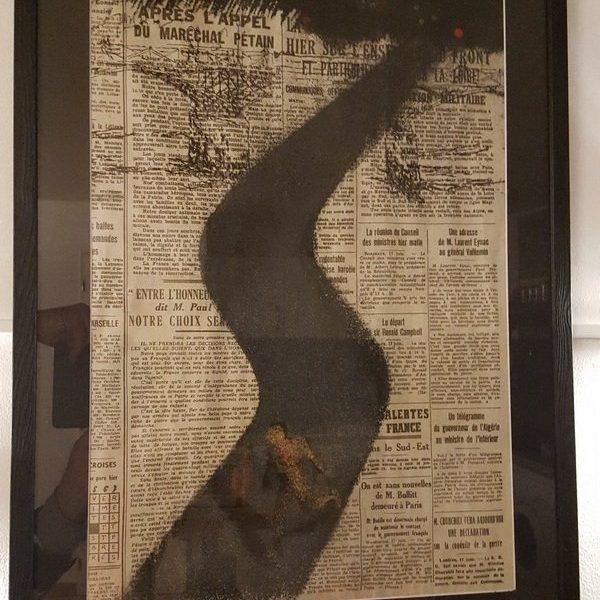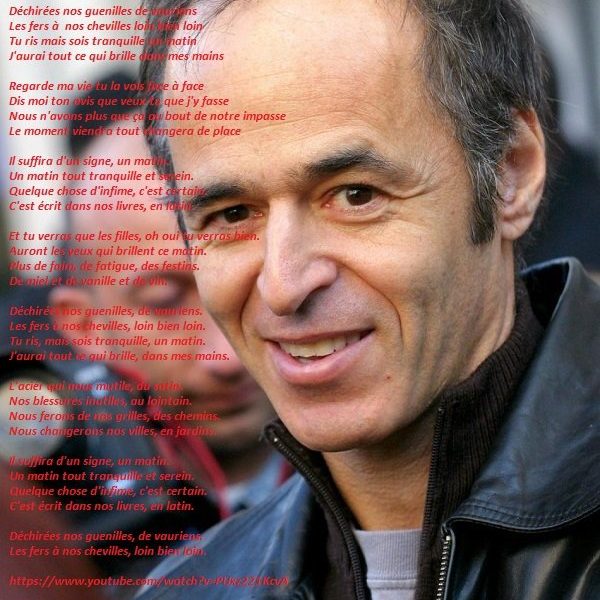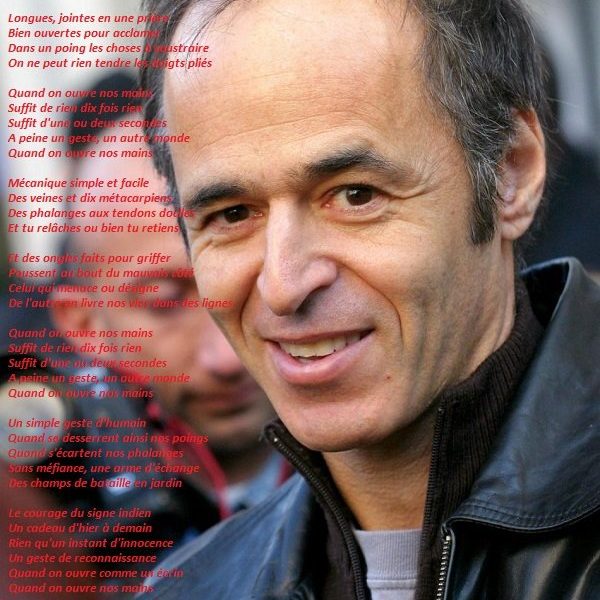——————————————-
« Des années après évoquant les ordres (écrits) du Président Harry S. Truman
de larguer les bombes nucléaires sur Hiroshima et Nagasaki,
le Général LeMay reconnu que ces actions n’étaient pas nécessaires »
Il avait ajouté par ailleurs :
« Si je n’avais pas été du coté des vainqueurs j’aurais été pendu pour crime contre l’humanité. »
« Quand les généraux des guerres « Otanesques » en diront autant ? (ndlr) »
——————————————-
Gen. Curtis LeMay, an Architect Of Strategic Air Power,
« Years after relaying the orders from President Harry S. Truman to drop nuclear
bombs on Hiroshima and Nagasaki, General LeMay said the actions were not
necessary. »
By ALFONSO A. NARVAEZ, Special to The New York Times
Published: October 2, 1990
http://www.nytimes.com/1990/10/02/obituaries/gen-curtis-lemay-an-architect-of-strategic-air-power-dies-at-83.html
Gen. Curtis E. LeMay, the former Air Force chief of staff who was an architect of
strategic air power and insisted that the nation be willing to use nuclear weapons
when necessary, died yesterday in a California military hospital. He was 83 years
old and lived in Moreno Valley, Calif.
The retired four-star general died of a heart attack at the 22d Strategic Hospital at
March Air Force Base, an Air Force spokesman said.
General LeMay, who directed the air assault over Japan in the final days of World
War II and relayed the Presidential order to drop nuclear bombs, years later
wrote that a solution to the Vietnam War might be to bomb North Vietnam »back
into the Stone Ages. »
After World War II he commanded the Berlin airlift, then for many years was the
commander of the Strategic Air Command. He entered politics briefly in 1968 as
the running mate of George C. Wallace in the former Alabama Governor’s
unsuccessful campaign for the Presidency.
Years after relaying the orders from President Harry S. Truman to drop nuclear
bombs on Hiroshima and Nagasaki, General LeMay said the actions were not
necessary.
‘Truman Told Me to Do It’
»We felt that our incendiary bombings had been so successful that Japan would
collapse before we invaded, » he said in a 1985 interview with the Omaha World
Herald. »We went ahead and dropped the bombs because President Truman told
me to do it. He told me in a personal letter. »
He was hawkish on the Vietnam War and an outspoken advocate of manned air
power based on a willingness to use nuclear weapons.
When Mr. Wallace introduced him as his running mate in 1968 on the American
Independent Party ticket, General LeMay called for use of any available means,
including nuclear weapons, to end the war. Later, he visited Vietnam on a fact-
finding mission and called for renewed bombing of North Vietnam, especially the
harbor at Haiphong.
In his book »Mission with LeMay, » published by Doubleday in 1965, he wrote of
the North Vietnamese, »My solution to the problem would be to tell them frankly
that they’ve got to draw in their horns and stop their aggression or we’re going to
bomb them back into the Stone Ages. »
Known as the »Iron Eagle, » General LeMay was an avid anti-Communist and held
other strongly conservative views. »I don’t believe there are good Communists
and bad Communists, » the general said. »I just think they are Communists and
they all have the same basic principles involved which I think are basically
wrong. »
At one point in his Vice-Presidential campaign, General LeMay acknowledged
that he was disturbed by the supporters who sometimes shouted, »Kill them » at
black hecklers.
»But I am a little more in sympathy with those people, » he added, »than I am with
people who come in and try to break up thge meeting. »
A tough, outdoors type, General LeMay appeared gruff and dominating and was
seen as implacable and unduly blunt.
One story that circulated about him was that when a group of colonels invited him
to dinner he replied with a scowl, »A man should have dinner with his friends, and
the commanding general has no friends. »
His Trademark: A Cigar
A stocky man of 5 feet 10 inches who was known for the cigar clenched in his
teeth, General LeMay was seen as tough but also fair.
»I want to see all my key staff officers at least once a week, » he said in his first
staff meeting in Germany in 1947 while he was heading the Berlin Airlift. »Don’t
bother to knock, just walk in. If I’m busy, I’ll tell you to get out. I want men of
action in my organization who can make their own decisions. »
Then he added, »If you make an occasional wrong one, I’ll back you up. »
He once instituted an Air Force survival school in the mountains near Colorado
Springs to imbue pilots with the will to escape if they were shot down behind
enemy lines. On one bitterly cold night as pilots were huddling in tents made of
parachutes, one of them began to complain loudly.
»Who thought up this deal? » he demanded to know.
Out of the doorway of another improvised tent emerged the unmistakable cigar
and the four stars of the commanding general.
»I did, » General LeMay said. »Got any comments? »
His Early Years
Curtis Emerson LeMay was born in Columbus, Ohio, on Nov. 15, 1906, and as a
boy built crystal wireless sets and roamed the southern Ohio hills with a gun and
Bowie knife.
On graduating from high school, he tried to get a West Point appointment from
his Congressman but he had no political influence and instead went to Ohio State
University and studied civil engineering.
He was in the Reserve Officers Training Corps and was accepted as a flying
cadet. After receiving a commission in 1930 as a pilot and combat observer, he
became one of the top navigators.
He served in Michigan and Hawaii before being called to the Air Force’s general
headquarters at Langley Field, Va. There he was assigned as an intelligence
officer for the 49th Bombardment Squadron. He was one of the first navigator-
pilots of B-17 bombers and took part in goodwill flights in the Flying Fortresses.
As an experienced long-range overwater navigator, he was selected to start ferry
routes to Africa and England and was awarded the Distinguished Flying Cross.
He was promoted to colonel in 1942 and as commander of the 305th
Bombardment Group took his men to Europe as part of the Eighth Air Force. On
the night before departing, he admonished his men about their behavior in
England.
»I don’t want to hear of any of you men getting into any fights with the British, » he
said. »But if you do, you’d better not get whipped. »
His group was among the first American Air Force units to see combat in World
War II. He earned the Air Medal and the Silver Star in five combat missions over
Europe. Deciding that too many B-17’s were missing their targets because they
were zig-zagging to avoid flak, he led a seven-minute straight-in run through
heavy enemy anti-aircraft fire to drop bombs on the German-held port of St.
Nazaire. This demonstrated the effectiveness of such straight-in runs.
He also developed the combat formation of placing aircraft at staggered levels so
firepower could be exploited from any angle. This stacking formation was
generally adopted for the duration of the war.
Night Incendiary Attacks
In 1944, he was assigned to the China-Burma-India theater of operations to head
the 20th Bomber Command, which had B-29 Super Fortresses. He initiated low-
level night incendiary attacks on Japanese industrial centers, including Tokyo.
Similar attacks devastated Nagoya, Kobe and Osaka. He received an Oak Leaf
Cluster to his Distinguished Flying Cross.
In August 1945, he became chief of staff of the Strategic Air Forces and was part
of the group that planned the atomic bombings of Japan. In 1947, he was
assigned to Germany, where he directed the Berlin Airlift that thwarted the Soviet
attempt to isolate Berlin as the cold war was breaking out.
A year later, he was appointed commanding general of the Strategic Air
Command and in 1961 was named Air Force Chief of Staff.
He is survived by his wife, the former Helen Maitland, whom he married in 1934,
and by a daughter, Jane.
Photos: Curtis E. LeMay (The New York Times, 1968); Major General LeMay,
left, leader of the 21st Bomber Command in the Pacific during World War II,
talking with one of his officers. (U.S. Army, 1945)







